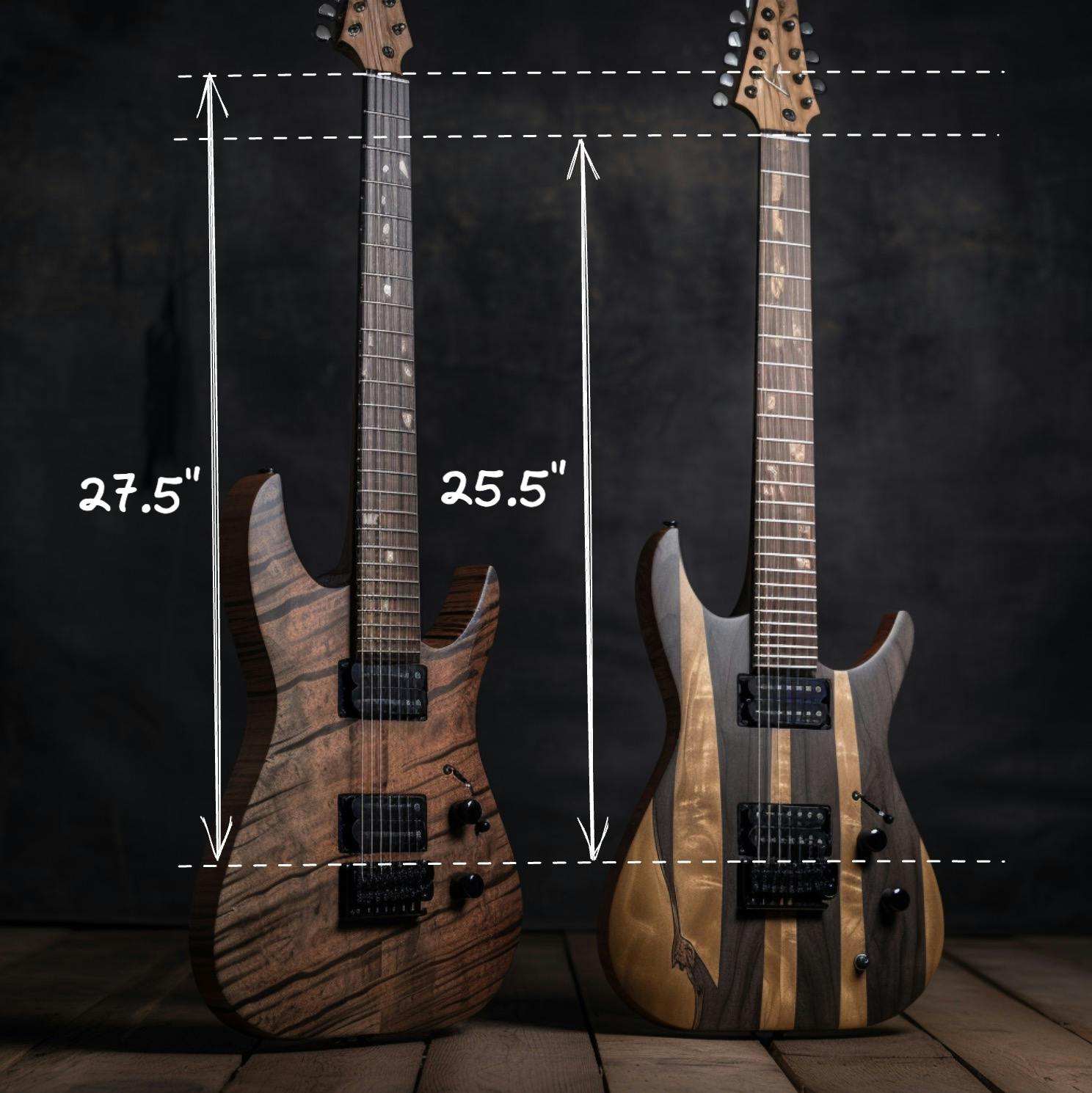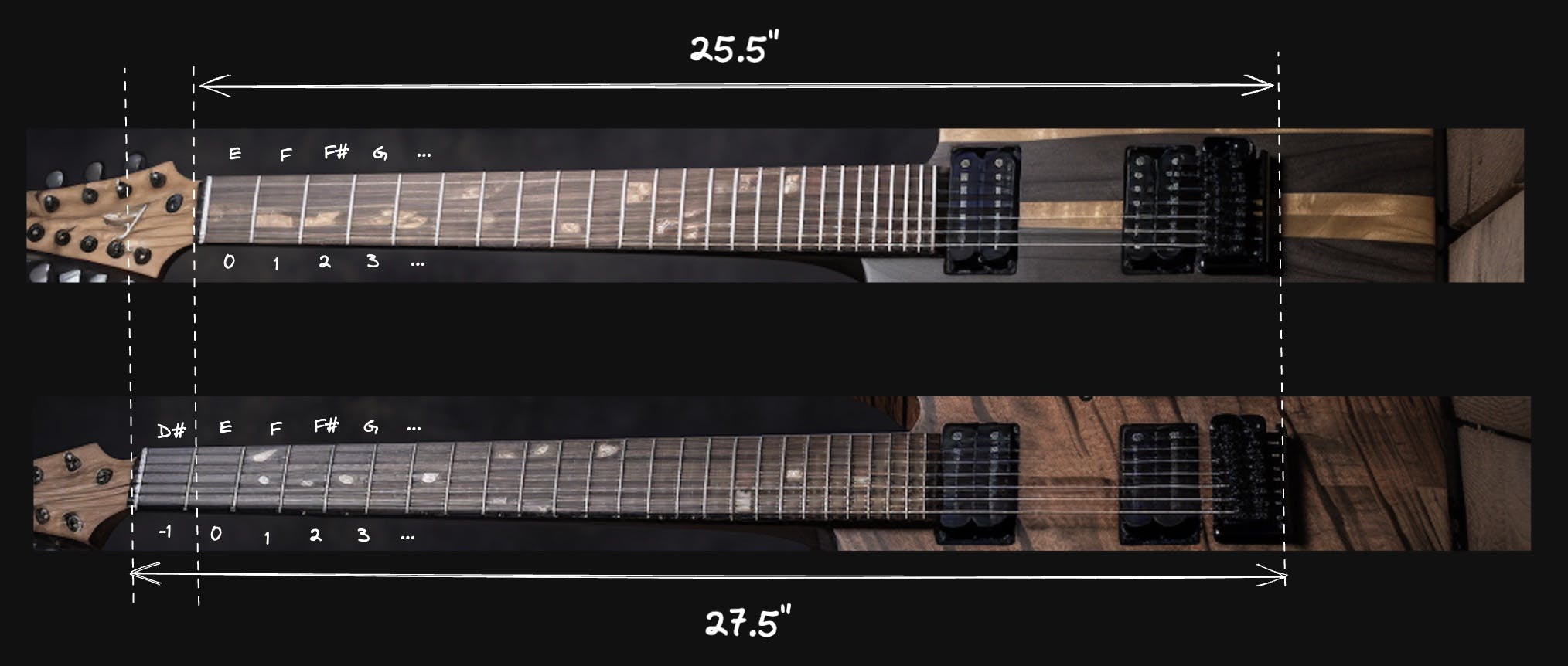What is guitar string tension?
Imagine that a guitar string is like a rubber band. When it's stretched tight, it has more tension or "stretchiness." Guitar strings need to be tight enough to make a nice sound when struck with a pick. However, if they're too tight, they can be difficult to play, and if they're too loose, they may produce a weird buzzing noise. Striking the right balance of tightness helps the guitar sound good and be easy to play.
We measure string tension in pounds (lbs). The higher the number, the tighter the string is.
For a guitar, "average" or "regular" tension is typically around 18 lbs.
If the tension is lower, around 13 lbs, you may notice the string hitting the frets of your neck, producing a distinct buzzing sound.
On the other hand, a tighter tension, around 22 lbs, will feel harder to play because you will need to apply more force to produce sound from the string.
What Affects String Tension?
1. String tuning (Pitch)
The higher you tune a string, the tighter it will become. For example, a guitar may be tuned to standard EBGDAE tuning (Standard E). The lower (thicker) E2 string is a 0.048 gauge string that has an average tension.
If you tune that last string one tone down to Drop D EBGDAD, you will notice that the string becomes noticeably looser.
2. String thickness (Gauge)
A thicker rubber band is harder to stretch than a thinner one. Similarly, thicker guitar strings require more tension than thinner ones.
If you've tuned your guitar to Drop D and noticed buzzing on the last string, try replacing it with a thicker string. This will provide a similar feel (almost) to your old string tuned to E.
You can see that swapping it with a 0.054 gauge string brings the tension back to the original 18 lbs-ish
3. String length (Scale)
You might have heard of baritone guitars. Baritone guitars are similar to normal guitars, but their neck or scale is slightly longer, which means the vibrating part of the string will also be longer.
The scale is measured in inches, and the most common scale is 25.5 inches.

The longer the string, the more it needs to stretch to produce the note at the same pitch.
Think of it like this: when you play a guitar, the higher up the fret you play, the higher the pitch of the note. The lowest note you can play on a string is an open note, where you don't hold any frets. Because baritone guitars have a longer scale, you can think of it as having a fret -1 which gives you a lower note while the string gauge and tension remain the same.

However, if you tune the baritone string so that an open string produces an E instead of a D#, the tension will increase.
Longer scale guitars are often used to achieve lower tunings without having to use thicker strings. You can see that the same exact string will have very similar tension on a larger scale guitar, even though it's tuned the whole tone down.
4. String weight (Unit Weight)
Not all strings are created equal. Some strings are heavier than others.
For example, one inch of a nickel string with a certain gauge will be slightly heavier than one inch of a steel string with the same gauge.
The heavier the string, the tighter it needs to be tuned to achieve the same pitch.
Common string materials
- Steel: Steel strings are commonly used for electric guitars and steel-string acoustic guitars due to their bright and clear tone. Typically, they are made from a steel core wrapped with different metal alloys, such as nickel, stainless steel, or nickel-plated steel. Among these types, pure steel strings are usually the lightest.
- Nickel: Nickel strings are popular for electric guitars due to their warm and smooth tone. They are slightly heavier than pure steel strings but lighter than some other materials. Nickel-wound strings have a steel core wrapped with pure nickel or nickel-plated steel.
- Bronze: Bronze strings are mainly used for acoustic guitars due to their bright and crisp tone. There are two popular types of bronze strings: 80/20 bronze (80% copper, 20% zinc) and phosphor bronze (a blend of copper with a small amount of phosphorous). Bronze strings are usually heavier than steel or nickel strings due to the density of copper.
- Nylon: Nylon strings are commonly used for classical guitars due to their warm and mellow tone. They are typically lighter than steel, nickel, or bronze strings. There are two types of nylon strings: treble strings made from clear or rectified nylon and bass strings made from nylon wrapped with silver-plated copper or other materials.
Different string manufacturers
Although a string may be made of the same material, different brands of strings can have different weights. For instance, Kalium strings are generally heavier than D'Addario strings, and using the exact same gauge will result in slightly different tension.